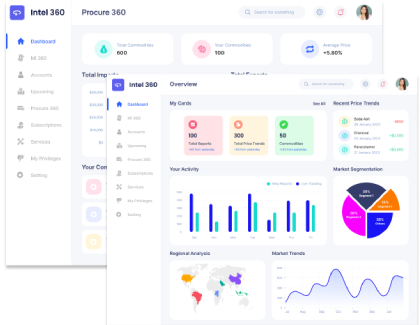The pandemic has affected international trade through reductions in both supply and demand through various ways like reduced access to medical supplies, budgetary shortfalls as a result of lower tariffs and taxes, and a general decline in economic activity leading to recessions, threats to social safety nets, and increased precariousness of income, employment, food security, and the consequences of governments' actions to prevent the virus from spreading any further; and the impact of the pandemic in third-world countries. The global merchandise trade recorded its largest ever one-period decline in the second quarter of 2020.
Although most economic shocks are caused by either a decrease in demand (bank failures and income losses) or a decrease in supply (price increase and rising production costs), the COVID-19 pandemic has created both situations at the same time. For example, as an immediate response to the pandemic, more than 80 countries and customs territories had implemented export prohibitions or restrictions by April 24, 2020. Because of the pandemic, labour shortages at ports slowed the movement of goods even more. In many countries, however, job losses and consequent wage reductions dampened demand for retail items and exchanged services. As more lockdowns are expected to continue, many of these behaviours are predicted to persist.
Also Read, Impact of COVID-19 on the Global Trade and Investments Market
Trade restrictions have also constrained access to basic health services, besides those needed to target COVID-19, including vaccines needed for mass immunisation campaigns. These issues have been exacerbated by many countries' nationalist or regionalist approaches, including the United States, which have contributed to fragmented and uncoordinated pandemic responses by creating a leadership vacuum. Countries could respond by temporarily lowering all trade barriers for medical products and repealing restrictive sanctions (the penalties imposed by states on each other owing to political disagreements). For example, Pakistan exempted medical equipment from import duties, whereas Brazil abolished tariffs on medical and hospital products. Exporters' actions can help to facilitate trade even more. China, for example, has made up for some of the decline in non-medical export demand by increasing exports of personal protective equipment (PPE) and medical equipment. The pandemic has created an acute and unprecedented level of demand for ventilators, some medicines, and personal protective equipment (PPE), and health-care providers and governments have been in a frantic scramble to obtain supplies.
In 2020, trade in nominal US dollars fell even more sharply than trade in volume terms. Global merchandise export values were down 8% from the previous year, while commercial service receipts were down 20%. International travel restrictions, that prevented the delivery of services that required physical presence, hampered the services trade.
The pandemic's impact on merchandise trade volumes varied by region in 2020, with most regions experiencing significant declines in both exports and imports. Asia was the single exception, with export volumes increasing by 0.3% while import volumes fell by 1%. Imports fell the most in natural resource-rich regions, such as Africa, South America, and the Middle East, owing to lower export revenues as oil prices fell by around 35%. In comparison to other regions, the drop in North American imports was minimal.
By October 18, 2020, 21 countries had announced temporary restrictions on food exports, putting upward pressure on prices. High-income countries are not exempt; in the United States, food insecurity has already doubled overall, and tripled among households with children. The volume of global trade in goods fell by in May 2020, when compared to the same month in 2019. The drop was widespread in the first five months of the year, affecting exports from the United States, Japan, and the European Union in particular.
China's exports fell sharply in February 2020 but recovered quickly and were back to normal by March 2020. The United States and Germany, however, experienced a dip in exports in April, but did not recover as quickly. In July 2020, China was up by USD 40 billion in exports on the same month last year whereas United States was still down in July by about USD 20 billion. February was the slowest export month for China.
Besides its worrying effects on human life, the novel strain of coronavirus (COVID-19) has the potential to significantly slow down not only the Chinese economy but also the global economy. China has become the central manufacturing hub of many global business operations. Any disruption in China's output is expected to have ramifications across regional and global value chains. China's manufacturing Purchasing Manager's Index (PMI) had dropped dramatically to 37.5, the lowest reading since 2004. On an annual basis, this drop implies a 2% decrease in output, according to the United Nations Conference on Trade and Development (UNCTAD). This is due to the direct consequence of the spread of coronavirus. The 2% drop in China's output has ripple effects throughout the global economy, resulting in an estimated USD 50 billion drop across countries.
The COVID-19 pandemic has been bad for some markets but good for others. Brazil's agricultural exports, such as frozen beef and soybeans, have been abundant. The former increased from USD 464 million in April 2020 to USD 639 million in May. Brazil's monthly soybean exports increased even more sharply in April 2020, by more than USD 1 billion year on year.
Car exports in Spain, Canada, Japan, and the United States were down by billions of dollars. The delivery truck exports fell by more than USD 1 billion in April and May 2020 in the United States, and only returned to normal levels in July. In May and June, the US aircraft part exports fell by more than USD 6 billion. Bicycle exports (primarily from China) followed a different pattern, falling sharply in February and March 2020 but rebounding furiously in the summer, increasing by more than 50% year on year in June and July 2020. Garment exports also declined sharply in 2020. Chinese apparel and footwear exports fell by more than USD 1 billion in February, April, and May.
The trade impact of the coronavirus pandemic for India is estimated to be about USD 348 million and the country figures among the top 15 economies most affected as slowdown of manufacturing in China disrupts world trade, according to a United Nations report. The most affected sectors include precision instruments, machinery, automotive and communication equipment. Among the most affected economies are the European Union, the United States, Japan, South Korea, Taiwan Province of China, and Vietnam. The trade impact for India is less as compared to other economies such as European Union, the United States, Japan, and South Korea.
For India, the trade impact is estimated to be the most for the chemicals sector, followed by the other sector like textiles and apparel, automotive sector, electrical machinery, leather products, metals and metal products and wood products and furniture.
India's merchandise exports nearly tripled in April, according to preliminary data provided by the ministry of commerce and industry. A low base effect generated by a nationwide lockdown in 2020 contributed to the growth. It was also aided by strong demand across industries in the first month of the current fiscal year. Merchandise imports in April were high, driven by gold, metals, medical products, and electronic goods. Trade deficit was also high year-on-year, in April 2019. Investments in consultancy and digital industries, including considerable greenfield investment, as well as merger and acquisition (M&A) deals in energy and infrastructure, improved FDI inflows to India.
The prospects for a rapid recovery in global trade have improved as merchandise trade expanded faster than expected in the second half of last year. According to new World Trade Organisation estimates, the volume of global merchandise trade is expected to rise 2021 after witnessing decline in 2020, continuing its recovery from the pandemic-induced collapse that peaked in the second quarter of last year. The relatively positive short-term outlook for global trade is harmed by regional disparities, continued weakness in services trade, and lagging vaccination schedules, particularly in developing countries.
COVID-19 remains the greatest threat to the trade outlook, as new waves of infection could easily derail any hope for recovery. Maintaining open international markets will be critical for economies to recover from this crisis, and a rapid, global, and equitable vaccine roll-out is required for a strong and sustained recovery.
According to World Trade Organisation, the demand for traded goods in 2021 will be driven by North America due to large fiscal injections in the United States, which should also stimulate other economies through the trade channel. Imports are expected to increase in Europe and South America, with smaller increases in other regions. Asia will meet a large portion of global import demand, with exports expected to increase in 2021. European exports will rise nearly as much, while North American shipments are likely to be less.
Strong forecasts for export growth in Africa and the Middle East rely on rising travel spending throughout the year, which would increase demand for oil. Meanwhile, South America will experience slower export growth, as will the Commonwealth of Independent States (CIS), which includes certain former and associate members, according to World Trade Organisation projections.




















Share